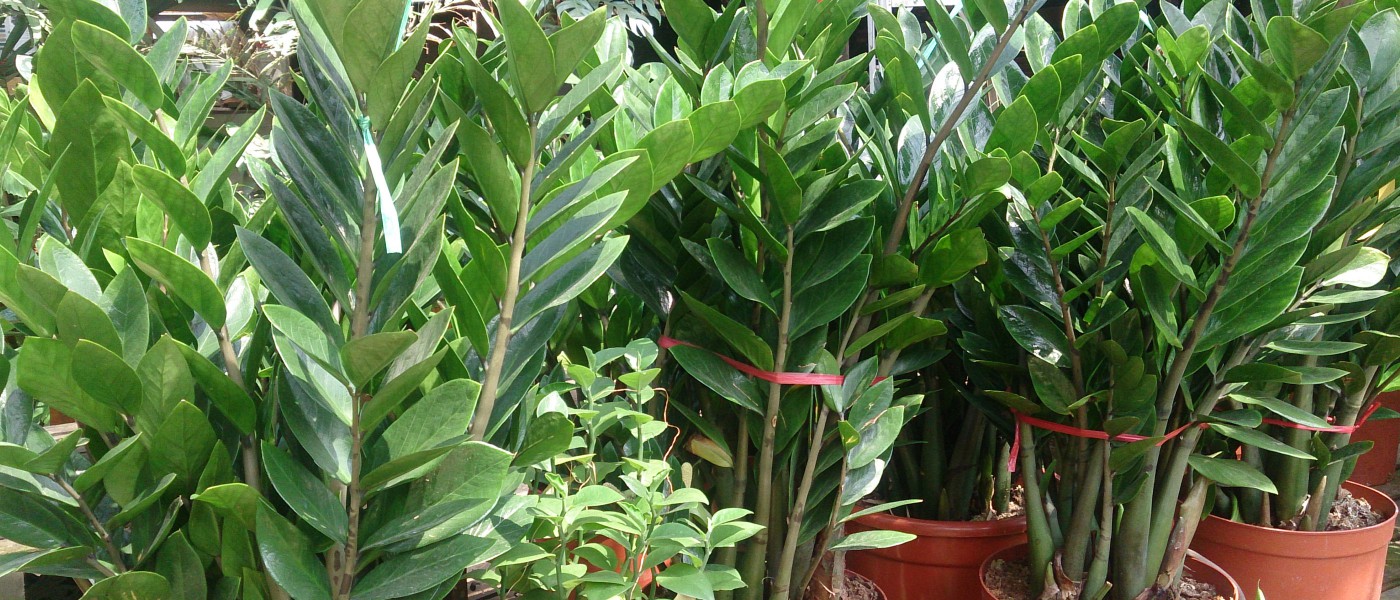ZZ Plant: A Narrative Guide
My Brooklyn apartment needed some houseplants. . . finally. My wife and I moved in three years ago, but after a newborn, new car, changes in jobs, we are still asking questions like, ‘Um, where is that box of picture frames?' Our place is not too dark, but it’s not super bright either, and all the windows face north. This scared me at first—I wanted some success right off the bat to build my houseplant confidence. So I turned to a plant with a reputation for being hard to kill: the ZZ plant.
"ZZ" stands for Zamioculcas zamiifolia. I promise I can pronounce the species name in person, but I’ll stick with ZZ plant here. The ZZ plant has been available as a houseplant for about 20 years, but it's getting more attention and appreciation recently. In fact, I first noticed it on a list of foolproof, low-light houseplants right here at bbg.org.
Foolproof, attractive, tolerant of low light—it sounded like just the plant for my apartment. Still, I think of myself a good graduate of BBG’s horticulture certificate program, where we were taught to “know your plant.” So I did a little research.
The Word on the Street
Most people seem to love the ZZ plant, but among the mostly positive things I read on garden blogs and other sites, a few snarky comments stood out. Some compared the ZZ plant to a waiting room or office plant (which indeed it can be). Others complained that the plant is boring and doesn’t “do” anything except thrive on neglect. Several sites repeated the myth that the ZZ plant could live in a closet. I couldn’t tell whether this was an actual criticism, an ironic joke, or encouragement for the novice.
I wasn’t looking for a plant simply to neglect it, nor did I have ample closet space in which to abandon one as an extreme test of its hardiness. I was up for some work, but I did want something hardy. I liked the way the ZZ looked, so I bought two plants. It's been a few months, and I’ve come to love them both. Here are a few things I've learned.
Natural History
Zamioculcas zamiifolia is native to East Africa, from Kenya to South Africa. It’s in the Araceae, or Arum family, the same plant family as the familiar houseplant peace lily (Spathiphyllum cochlearispathum). If and when the ZZ plant flowers, it produces a spadix-type flower similar to the peace lily but harder to see. The ZZ has a reproductive strategy that’s unique among arums: Its fallen leaflets can take root (see Propagation, below).
The ZZ plant’s scientific name is based on its resemblance to certain kinds of cycads, ancient plants that predate dinosaurs. (True cycads can be seen in BBG’s Steinhart Conservatory.) In nature, it can be found in grasslands, along riverbanks, and in dry forests. ZZ plants grow potato-like rhizomes underground for storing water, a trait that likely helps them persist in times of drought.
Caring for a ZZ Plant
It’s true that ZZ plants have become popular because they’re tolerant of many conditions. They do well in low light and don't need frequent watering. In fact, you should avoid watering them too much altogether. I water mine about every three weeks, and even then I'm careful not to soak the soil or leave the plants in standing water. My ZZs can definitely sit in dry soil for a while.
I bought my plants at a big-box home improvement store. They were in six-inch pots and cost around $12 each. The pots appeared to be from different suppliers, and the plastic plant labels contradicted each other: One label specified "low light"; the other said “bright light” but also "easy to grow." Most sources say one of these things: Avoid direct sunlight; place in indirect light; tolerates low light to filtered shade (though may grow slowly).
Here’s what I do: I move the plants back and forth between a windowless foyer space (where guests can see how great they look upon entering our apartment) to an area of north-facing, indirect light. If I forget to make this daily move, I don’t freak out, because I know the plants will be fine. I’ve even gotten some new growth lately.
So far, my plants have not attracted pests, and I haven’t had them so long that they need repotting.
Propagation: Making More ZZ Plants
I found plenty of detailed information on propagating ZZ plants online for anyone who wants to have more. The two methods are dividing (essentially splitting the plant in half) or leaflet cuttings. (An entire stalk, including the leaflets, is considered one leaf.) It can take a few months for a cutting to sprout. My plants came with some inserted cuttings; this may be how the suppliers grew the plants.
Why I Like This Plant
The ZZ plant is turning out to be a great starter houseplant for me. After a few months, both of mine are alive and well, and even thriving in their subtle way. I love their cycad look, which sets them apart from other houseplants. In particular, I like the way their smooth, glossy green leaflets start close to the soil and run up both sides of the upright leaf stems. I’m even seeing some new growth unfurling, giving the plant a two-tone look. I’m not sure what my plants will look like in a year—chances are they won’t have changed dramatically. But if you’re searching for a reliable, unfussy houseplant with a somewhat exotic appearance, look no further than the ZZ.
- Never have to bug neighbors or friends to water your plants
- Sound smart at cocktail* parties by pointing out resemblance to dinosaur-era cycads (*Okay, personally, I've never hosted a cocktail party—do people still do this?)
- Can make new ZZs with leaflet cuttings for gifts to friends and family (if you plan far enough ahead)


